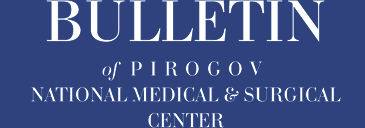Authors
Alkharki L., Matyushchenko A.G., Dudieva F.K., Shkolarenko N.Yu., Altemirova H.H., Meremkulova M.O.
M.M. Krasnov Research Institute of Eye Diseases, Moscow
Abstract
Modern swipe-source OCT (SS-OCT), in particular the CASIA2 system, has become a key tool in ophthalmology for visualizing the anterior segment of the eye. Its technological advantages, including a wavelength of ~1310 nm and high scanning speed, ensure deep penetration and high image quality of the cornea, anterior chamber angle, iris and lens. This allows us to move from qualitative assessment to accurate quantitative biometrics. The method is especially important for the diagnosis and monitoring of angle-closure glaucoma, objectively assessing the degree of iridotrabecular contact using the ITC index, which helps in choosing between laser iridotomy and lens removal. Accurate measurements of the lens parameters (thickness, curvature, position) reveal its role in the pathogenesis of the disease. The use of OCT is also effective for monitoring changes after intravitreal injections and noninvasive visualization of lacrimal tracts. A promising direction is the integration of quantitative OCT data with machine learning algorithms to personalize treatment. Thus, SS-OCT significantly expands the possibilities of diagnosis, intervention planning, and outcome prediction in refractive, cataract, and glaucoma surgery.
Keywords: optical coherence tomography, cataract, glaucoma, CASIA2.
References
1. Kurysheva NI, Sharova GA. The Role of Optical Coherence Tomography in the Diagnosis of Angle-Closed Diseases of the Anterior Chamber. Part 1: Visualization of the Anterior Segment of the Eye. Ophthalmology in Russia. 2021;18(2):208-215 (In Russ.) doi:10.18008/1816-5095-2021-2-208-215.
2. Kurysheva NI, Sharova GA, Kalimullina LR. Investigation of Iridotrabecular Contact in Primary Angle Closure. Russian Annals of Ophthalmology. 2024;140(6):24-31 (In Russ.) doi:10.17116/oftalma202414006124.
3. Voronin GV, Petrov SYu, Volzhanin AV, El-Sangahawi AA, Avetisov KS. Iris Shape Change and Risk of Anterior Chamber Angle Closure. Russian Annals of Ophthalmology. 2020;136(2):93-98 (In Russ.) doi:10.17116/oftalma202013602193.
4. Andreeva YuS, Alkharki L, Budzinskaya MV. Changes in Intraocular Pressure and Biometric Parameters of the Anterior Segment of the Eye after Intravitreal Injections. Russian Annals of Ophthalmology. 2024;140(2-2):7-15 (In Russ.) doi:10.17116/oftalma20241400227.
5. Atkova EL, Surnina ZV, Maydanova AA, Krakhovetskiy NN. Optical Coherence Tomography in the Diagnosis of Pathologies of the Horizontal Portion of the Lacrimal Drainage System. Russian Annals of Ophthalmology. 2022;138(5-2):279-284 (In Russ.) doi:10.17116/oftalma2022138052279.
6. Kurysheva NI, Pomerantsev AL, Rodionova OYe, Sharova GA. Machine Learning Methods in the Comparative Evaluation of Hypotensive Efficacy of Laser Peripheral Iridotomy and Lensectomy in Primary Angle Closure. Ophthalmology in Russia. 2022;19(3):549-556 (In Russ.) doi:10.18008/1816-5095-2022-3-549-556.
7. Kurysheva NI, Sharova GA. The Role of Optical Coherence Tomography in the Diagnosis of Angle-Closed Diseases of the Anterior Chamber. Part 2: Visualization of the Posterior Segment of the Eye. Ophthalmology in Russia. 2021;18(3):381-388 (In Russ.). doi:10.18008/1816-5095-2021-3-381-388.
8. Fajzrahmanov R.R., Kalinin M.E., Pavlovskij O.A., Bosov E.D. Ocenka parametrov perednego otrezka po dannym opticheskoj kogerentnoj tomografii u pacientov s glaukomoj https://doi.org/10.25276/2312-4911-2023-3-135-139.
9. Kalinin M.E., Fayzrakhmanov R.R., Pavlovsky O.A. Analysis of optical coherence tomography data in patients with various types of glaucoma. 2023;18(4,supplement):9092. https://doi.org/10.25881/20728255_2023_18_4_S1_90.


